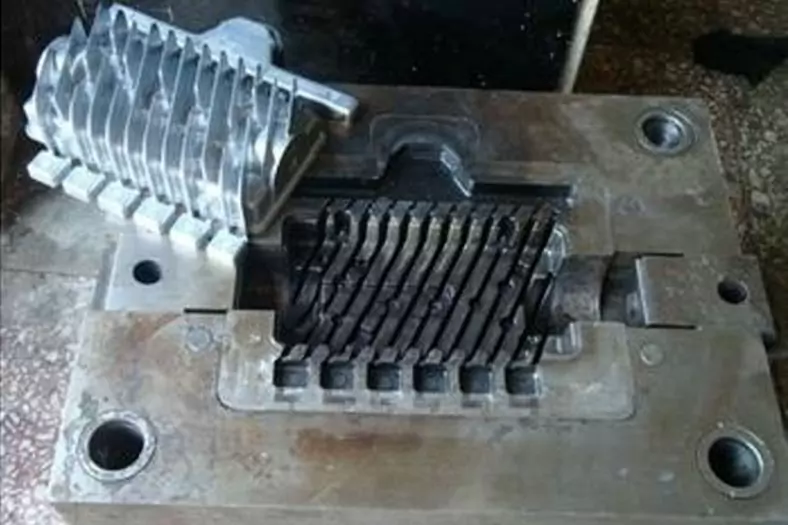The term “Multi-Layer Multi-Microprocessor Mechanism” refers to a specific architecture used in some advanced numerical control (NC) systems for machine tools. This architecture utilizes multiple layers of microprocessors to handle different aspects of the NC system’s operation, enabling better performance, flexibility, and efficiency.
Let’s break down the key components of this mechanism:
Multi-Layer Architecture
The multi-layer architecture divides the numerical control system into multiple functional layers, each responsible for specific tasks. This division allows for a more organized and efficient system, as each layer can focus on its designated functions independently.
Multi-Microprocessor Setup
Within each layer, multiple microprocessors are used to execute different tasks concurrently. These microprocessors can be specialized for their particular functions, optimizing their performance and responsiveness.
Task Distribution
Each microprocessor within the multi-layer system is assigned specific tasks based on its capabilities. For instance, one microprocessor may handle trajectory planning, another may handle feedback control, and yet another may manage communication with the machine’s drives and sensors.
Parallel Processing
With the multi-microprocessor setup, parallel processing can be achieved, where multiple tasks are executed simultaneously. This allows the system to handle complex calculations and data processing more efficiently, reducing overall processing time.
Real-Time Performance
The use of multiple microprocessors with dedicated functions enhances the real-time performance of the numerical control system. Real-time control is crucial in CNC applications to ensure precise and timely execution of machining operations.
Flexibility and Scalability
The multi-layer multi-microprocessor mechanism offers flexibility and scalability. The system can be easily expanded or modified by adding or upgrading microprocessors to accommodate new features or address increasing demands.
Redundancy and Reliability
Some implementations of this mechanism may include redundant microprocessors to enhance system reliability. Redundancy ensures that if one microprocessor fails, another can take over its tasks, preventing critical failures.
Interprocessor Communication
For efficient coordination and data exchange, interprocessor communication protocols are implemented to allow seamless communication between microprocessors across different layers.
This advanced architecture is well-suited for high-performance CNC machines that require complex and demanding machining operations. By utilizing multiple layers and microprocessors, the numerical control system can achieve enhanced processing capabilities, better real-time control, and improved reliability. However, it’s important to note that the specific implementation and complexity of the multi-layer multi-microprocessor mechanism may vary depending on the manufacturer and the intended application of the CNC machine.

The CNC system manages the workstation functions and NC functions by a separate PC, and is equipped with a hierarchical multi-PC structure of intelligent modules for different purposes according to application requirements. The workstation function mentioned here refers to the execution of tasks that are not real-time or non-real-time, such as scheduling and management, using CAD/CAM software to design and process parts and compile technological processes.
The NC function refers to the execution of real-time tasks that directly affect the machining process, such as the control of the machining trajectory, servo control, sampling and sensor processing. This multi-PC structure can meet high-speed, high-precision machining and other high-level CNC functions.
The open numerical control system has become the focus of current controller research. But there is no unified statement and standard on the definition of “open”. From the current research on open control systems in various countries, open CNC systems should have the following basic characteristics.
Modularization
An open CNC system should have a high degree of modularity. The meaning of modularization has two layers: one layer is the modularization of CNC functions, which can be performed according to the requirements of the machine tool factory; the other layer is the modularization of the system architecture, that is, the algorithms for realizing each function inside the CNC system are separable , replaceable. The modularization of the system system is the basis of functional modularization, and also the basis of system configuration and reorganization. Only the modularized sensitive control system can be regarded as an open system.
Standardization
“Opening” is not unconstrained openness, but openness under an irregular norm. The steps for developing an open controller by various developed car manufacturers are as follows: an alliance is formed by a number of companies and research institutes in the field of mechanical controllers to comprehensively formulate controller standards, including various interfaces of hardware and software, and then follow the industry. publish these standards.
Companies can develop components or functional modules in the controller according to the standards and their own technical expertise. Products from different companies can become a controller that integrates the wisdom and functions of multiple companies, which can be partially upgraded without affecting other functions of the system. The basis of standardization is modularization, because the formulation of per capita output value should be based on the rational basis of modularization.
At Be-cu.com,we use advanced equipment to offer you Unparalleled precision for producing metal and plastic machining parts
- We combine the latest CNC milling and turning processes with proprietary technology to deliver high quality, on-demand parts.
- Our team of engineers and machinists program the equipment to optimize cutting time, surface finish, and final tolerance to meet your design specifications
- We specialize in cnc precision machining, single part prototyping, short to medium production runs, manufacture parts on time, every time, so you can stay ahead of schedule
- CNC machining can create very similar parts to series parts. It is often more efficient and faster than other rapid prototyping technologies for the manufacture of a quantity of prototypes between 1 and 10 parts . We also recommend CNC machining for parts with large sizes (greater than 600 mm).
Contact Us ([email protected]) Now for your Custom CNC Machining, We are your best online cnc machining and rapid prototyping services choice!
